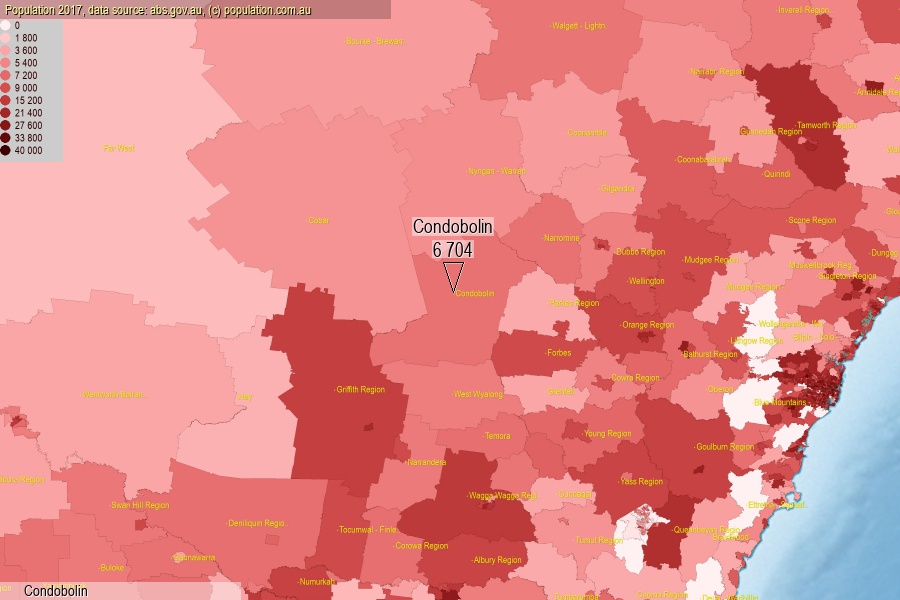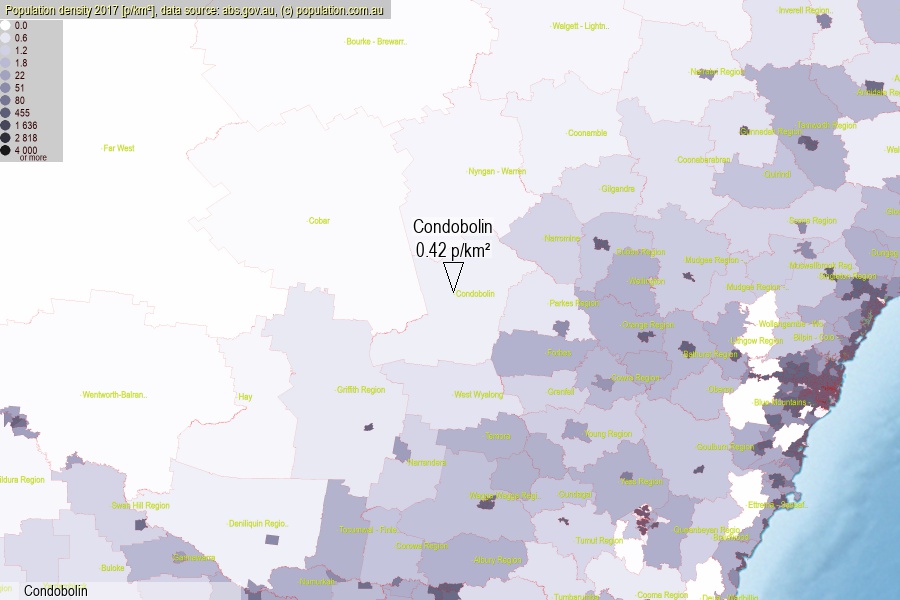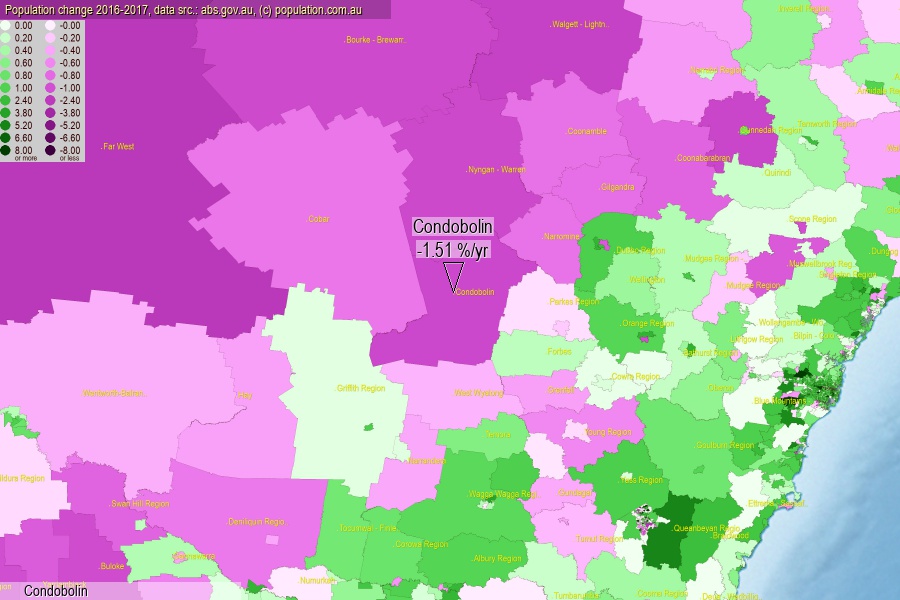 population.com.au
population.com.auLast official estimated population of Condobolin (as Statistical Area Level 2) was 6 704 people (on 2017-06-30)[2]. This was 0.03% of total Australian population and 0.084% of NSW population. Area of Condobolin is 15 858.90 km², in this year population density was 0.42 p/km² . If population growth rate would be same as in period 2016-2017 (-1.51%/yr), Condobolin population in 2025 would be 5 934. [0]



Click to enlarge. Condobolin is located in the center of the images.
Population [people], population density [p./km²] and population change [%/year] [2]
View borders » (new window) [4]
[1991-1992] -0.36 %/Yr.
[1992-1993] -1.08 %/Yr.
[1993-1994] -0.85 %/Yr.
[1994-1995] -1.44 %/Yr.
[1995-1996] -1.30 %/Yr.
[1996-1997] -0.34 %/Yr.
[1997-1998] -0.25 %/Yr.
[1998-1999] -0.30 %/Yr.
[1999-2000] -0.47 %/Yr.
[2000-2001] -0.24 %/Yr.
[2001-2002] -1.50 %/Yr.
[2002-2003] -1.97 %/Yr.
[2003-2004] -1.99 %/Yr.
[2004-2005] -2.02 %/Yr.
[2005-2006] -1.80 %/Yr.
[2006-2007] -1.63 %/Yr.
[2007-2008] -0.14 %/Yr.
[2008-2009] -0.31 %/Yr.
[2009-2010] -0.28 %/Yr.
[2010-2011] +0.27 %/Yr.
[2011-2012] -0.64 %/Yr.
[2012-2013] -0.82 %/Yr.
[2013-2014] -0.82 %/Yr.
[2014-2015] -1.12 %/Yr.
[2015-2016] -1.32 %/Yr.
[2016-2017] -1.51 %/Yr.
[0] Calculated with linear interpolation from officially estimated population
[1] Read more about SA2 and Australian Statistical Geography Standard (ASGS) on abs.gov.au
[2] Population data from Australian Bureau of Statistics (Population and density: 2017; change: 2016-2017)
[3] Digital Boundaries: Australian Statistical Geography Standard (ASGS) 2016.
[4] Border coordinates are simplifyed using Ramer-Douglas-Peucker algorithm.